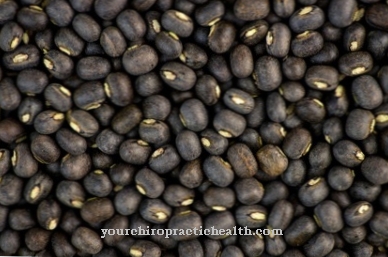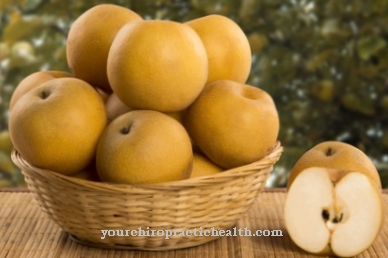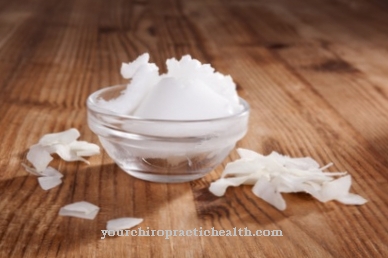salt Has been a valued condiment since ancient times, which was also very valuable in earlier times. Without the addition of salt, many dishes would be almost inedible, although almost all foods naturally contain some salt.
Although salt does not have the best reputation from a health point of view, humans could not live entirely without salt, as the mineral is an important component of the human body and has to be taken in through food every day.
What you should know about table salt

From a chemical point of view, salts are compounds in which ions are arranged in a crystal lattice. Table salt or table salt is the special type of salt that is suitable for consumption and is therefore used in the kitchen to season dishes.
Salt is one of the most important and widely used spices around the world. It mainly consists of sodium chloride (NaCl), which is not only a component of the blood, but is also essential for the human cell metabolism.
Table salt appeared very early in human history. Exact numbers can hardly be determined, but the origin of salt consumption dates back several thousand years. Back then, salt was a very valuable product that was also often used for barter transactions. Important trade routes were built especially for business with salt, such as the Italian "Via Salaria" (salt route), which ran from the port in Ostia to Rome.
The salt we use today can be hundreds of millions of years old. The oldest way of obtaining salt is to extract it from salty sea water. So it is not surprising that the salt was first discovered and used in regions near the coast. In the past, table salt was used not only for seasoning but also for preserving food. It was already recognized that salt removes water from food, which makes it last longer.
The modern extraction of salt takes place through evaporation or evaporation in so-called salt pans. In addition to sea salt, which is obtained through evaporation and which today covers around a fifth of the world's salt consumption, rock salt is also frequently used. The raw material from which the rock salt is extracted comes from natural salt deposits underground and is mostly excavated or otherwise extracted.
Sometimes table salt additives are added. It often contains trickling aids such as lime or health-promoting minerals such as iodine or fluoride. The World Health Organization (WHO) and the German Nutrition Society (DGE) recommend a salt consumption of no more than six grams per day. This is the equivalent of two level teaspoons full of table salt. However, this value is reached very quickly, as salt not only exists in isolated form, but is also contained in every natural food to a small extent. Most people therefore eat significantly more salt than is recommended by experts, often almost twice as much.
Importance to health
From a health perspective, table salt does not have the best reputation. In larger amounts, it increases blood pressure, which can cause serious cardiovascular disease in the long term.
However, the body cannot survive entirely without salt. In addition, most dishes would be lacking in taste without the addition of table salt. There is about a teaspoonful of salt in the blood of an adult. Every day the body loses some of its salt, for example through sweating. This missing salt has to be supplied again through food. Without enough salt, vital metabolic processes cannot run smoothly.
Ingredients & nutritional values
| Nutritional information | Amount per 100 gram |
| Calories 0 | Fat content 0 g |
| cholesterol 0 mg | sodium 38,758 mg |
| potassium 8 mg | carbohydrates 0 g |
| protein 0 g | vitamin C 0 mg |
However, some minerals are naturally found in salt. Some table salts also have additional minerals artificially added. 100 grams of natural table salt contain on average:
- 250mg calcium
- 1000mg chloride
- 0.1mg iron
- 0.05mg fluoride
- 2μg iodine
- 120mg magnesium
Intolerance & allergies
There is no allergy to salt. That would also be fatal, after all, salt is an important part of our body. The body's salt balance needs to be balanced every day by consuming salt. However, too much salt is not healthy either.
If too much salt is eaten, the body tries to balance its budget by storing more water. However, especially people with high blood pressure should keep an eye on their salt consumption. In the long term, excessive salt consumption can lead to cardiovascular diseases such as heart attacks and strokes.
Shopping & kitchen tips
Basically, salt has a very long shelf life if stored in a dry place. Salt can, however, become lumpy, especially when stored for long periods in the kitchen, due to the high level of air humidity, as it absorbs the moisture from the air.
Rice grains, which are put into the salt shaker together with the salt, provide a remedy. The rice grains themselves do not fit through the holes in the shaker and so stay in the container, where they draw the moisture from the salt. In this way, the table salt remains fine-grained and dry even without added flow aids.
In addition to the conventional table salt, gourmets will also find more unusual varieties such as the natural Fleur de Sel, the pink Himalayan salt, the black Hawaiian salt with activated charcoal and a nutty taste, salt from Persia with some blue salt crystals or smoked salt. Such salts are a special treat either for the eyes or for sensitive palates.
In addition to unusual types of salt, spice salts are also very popular. It is a mixture of salt and one or more spices or herbs. There are no limits to the possibilities for different spice salts. Classics are, for example, the garlic salt or the herbal salt, which usually contains different types of herbs.
Preparation tips
Almost every cooked dish becomes palatable only after adding salt. Vegetables, potatoes, pasta and similar foods taste best when about a level teaspoon of salt has already been added to the cooking water.
In order to keep the salt content in the food as low as possible, it is advisable to use only a little salt when cooking and to emphasize the taste with other spices. With a salt shaker at the table, everyone can add salt to their own taste.













.jpg)

.jpg)
.jpg)











.jpg)